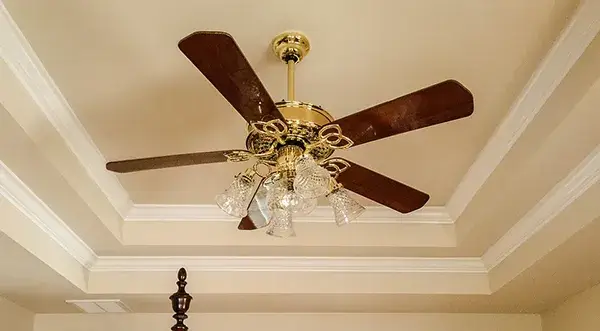The answer is: it depends on the size of your room, the height of your ceiling, and your personal preference. Oversizing a ceiling fan can have some benefits, such as better air circulation, cooling effect, and aesthetic appeal. However, it can also have some drawbacks, such as higher energy consumption, noise, and safety issues. In this article, we will explore the pros and cons of oversizing a ceiling fan, and how to choose the right size for your space.
Benefits of oversizing a ceiling fan
One of the main reasons why some people prefer to oversize their ceiling fans is to improve the airflow and cooling effect in their rooms. A larger fan can move more air than a smaller one, creating a stronger breeze that can lower the temperature and make you feel more comfortable. This can be especially useful in hot and humid climates, or in rooms that have poor ventilation or high ceilings.
Another benefit of oversizing a ceiling fan is to enhance the aesthetic appeal of your room. A larger fan can make a statement and add some character and style to your space. Depending on the design and color of your fan, you can create different effects, such as modern, rustic, or elegant. A larger fan can also balance out the proportions of a large room, making it look more cozy and inviting.
Drawbacks of oversizing a ceiling fan
However, oversizing a ceiling fan can also have some disadvantages that you should consider before making a decision. One of the main drawbacks is the higher energy consumption and cost. A larger fan requires more power to operate than a smaller one, which means that it will consume more electricity and increase your utility bills. This can also have a negative impact on the environment, as it will contribute to more greenhouse gas emissions and carbon footprint.
Another drawback of oversizing a ceiling fan is the noise and vibration that it can produce. A larger fan can generate more noise than a smaller one, which can be annoying and disturbing for some people. The noise can also interfere with your sleep quality, your concentration, and your communication. Moreover, a larger fan can create more vibration and wobble, which can damage your ceiling and fan motor over time.
A third drawback of oversizing a ceiling fan is the safety issue that it can pose. A larger fan can be more dangerous than a smaller one, as it can pose a risk of hitting your head, your furniture, or your walls. This can cause injuries, damages, or accidents that can be costly and harmful. To avoid this, you need to make sure that your ceiling fan is installed at a safe height and distance from any obstacles, and that it is securely mounted and balanced.
How to choose the right size for your ceiling fan
To determine the best size for your ceiling fan, you need to consider the size of your room, the height of your ceiling, and your personal preference. Here are some general guidelines that you can follow:
- For small rooms (up to 100 square feet), choose a fan with a blade span of 36 inches or less.
- For medium rooms (100 to 225 square feet), choose a fan with a blade span of 37 to 48 inches.
- For large rooms (225 to 400 square feet), choose a fan with a blade span of 49 to 60 inches.
- For very large rooms (more than 400 square feet), choose a fan with a blade span of 61 inches or more.
- For low ceilings (8 feet or less), choose a flush mount or hugger fan that is close to the ceiling.
- For standard ceilings (8 to 10 feet), choose a fan with a downrod of 3 to 5 inches.
- For high ceilings (more than 10 feet), choose a fan with a longer downrod that is proportional to the ceiling height.
- For optimal performance and comfort, choose a fan that has a high airflow (measured in cubic feet per minute or CFM), a high efficiency (measured in CFM per watt), and a low noise level (measured in decibels or dB).
- For personal preference, choose a fan that matches your style, taste, and budget. You can also choose a fan that has additional features, such as lights, remote control, reversible blades, or smart technology.
Conclusion
Oversizing a ceiling fan can have some advantages and disadvantages, depending on your situation and preference. You need to weigh the pros and cons of oversizing a ceiling fan, and choose the right size for your room, ceiling, and comfort. By doing so, you can enjoy the benefits of a ceiling fan, such as improved airflow, cooling effect, and aesthetic appeal, without compromising your energy efficiency, noise level, and safety.

